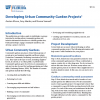 Community gardens are pieces of land where groups of people grow and maintain vegetable and flower plants. They exist in all types of areas, including neighborhoods, at schools, or on other public or private lands. Community gardens grow food for local consumption or sale and can also be used for teaching gardening and other skills This 7-page fact sheet provides a guide to individuals or groups interested in starting urban community gardens and includes information about how to identify garden sites, build partnerships, engage community members, and develop a project overview. Written by Austen Moore, Amy Harder, and Norma Samuel, and published by the UF Department of Agricultural Education and Communication, March 2013.
Community gardens are pieces of land where groups of people grow and maintain vegetable and flower plants. They exist in all types of areas, including neighborhoods, at schools, or on other public or private lands. Community gardens grow food for local consumption or sale and can also be used for teaching gardening and other skills This 7-page fact sheet provides a guide to individuals or groups interested in starting urban community gardens and includes information about how to identify garden sites, build partnerships, engage community members, and develop a project overview. Written by Austen Moore, Amy Harder, and Norma Samuel, and published by the UF Department of Agricultural Education and Communication, March 2013.
http://edis.ifas.ufl.edu/wc139
Category: Sustainable Living
Opciones de gestion agronomica para la variabilidad y para el cambio climatico: El riego localizado (HS1212)
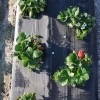 Esta publicación se enfoca en el uso del riego localizado para mejorar los sistemas de producción. This 5-page fact sheet was written by Lincoln Zotarelli, Clyde Fraisse, and Daniel Dourte, and published by the UF Department of Horticultural Sciences, January 2013.
Esta publicación se enfoca en el uso del riego localizado para mejorar los sistemas de producción. This 5-page fact sheet was written by Lincoln Zotarelli, Clyde Fraisse, and Daniel Dourte, and published by the UF Department of Horticultural Sciences, January 2013.
http://edis.ifas.ufl.edu/hs1212
Pretreatment of Ligno-cellulosic Biomass for Biofuels and Bioproducts (AE495)
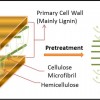 This 4-page fact sheet discusses bioethanol as a renewable form of energy, explaining the importance of using ligno-cellulosic biomass to produce biofuels. It describes the pretreatment step in producing biofuels and the need for more research into this step so that ligno-cellulosic biofuels can be produced cheaply and efficiently at a commercial scale. Written by Zhaohui Tong, Nusheng Cheng, and Pratap Pullammanappallil, and published by the UF Department of Agricultural and Biological Engineering, January 2013.
This 4-page fact sheet discusses bioethanol as a renewable form of energy, explaining the importance of using ligno-cellulosic biomass to produce biofuels. It describes the pretreatment step in producing biofuels and the need for more research into this step so that ligno-cellulosic biofuels can be produced cheaply and efficiently at a commercial scale. Written by Zhaohui Tong, Nusheng Cheng, and Pratap Pullammanappallil, and published by the UF Department of Agricultural and Biological Engineering, January 2013.
http://edis.ifas.ufl.edu/ae495
Developing Land in Florida with Fire in Mind: Recommendations for Designers, Developers, and Decision Makers (FOR63/FR059)
 In 1998, fire destroyed or damaged 330 homes and businesses in Florida. Losses totaled more than $800 million. In some places, homes were saved by fire-fighting crews, or where the right decisions were made by builders or designers. With advance planning, architects and developers can do a great deal to reduce wildfire risk for those living and working in Florida. This 5-page fact sheet was written by Martha C. Monroe and Susan Marynowski, and published by the UF Department of School of Forest Resources and Conservation, September 2012.
In 1998, fire destroyed or damaged 330 homes and businesses in Florida. Losses totaled more than $800 million. In some places, homes were saved by fire-fighting crews, or where the right decisions were made by builders or designers. With advance planning, architects and developers can do a great deal to reduce wildfire risk for those living and working in Florida. This 5-page fact sheet was written by Martha C. Monroe and Susan Marynowski, and published by the UF Department of School of Forest Resources and Conservation, September 2012.
http://edis.ifas.ufl.edu/fr059
Cultivos en asocio, diversidad de cultivos y manejo integrado de plagas (ENY862S/IN932)
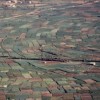 El cultivo en asocio (o cultivo intercalado) es una práctica en donde se siembran diversos cultivos en un mismo campo. Adicionalmente plantas que no son cultivos, tales como las malezas, cultivos rastreros o de cobertura, así como plantas del hábitat, se pueden combinar en el espacio y tiempo para influir en el número de plagas o artrópodos benéficos en un cultivo principal. This 7-page fact sheet was written by Hugh Smith y Oscar Liburd. Traducido por Ana Lucrecia MacVean, and published by the UF Department of Entomology and Nematology, June 2012.
El cultivo en asocio (o cultivo intercalado) es una práctica en donde se siembran diversos cultivos en un mismo campo. Adicionalmente plantas que no son cultivos, tales como las malezas, cultivos rastreros o de cobertura, así como plantas del hábitat, se pueden combinar en el espacio y tiempo para influir en el número de plagas o artrópodos benéficos en un cultivo principal. This 7-page fact sheet was written by Hugh Smith y Oscar Liburd. Traducido por Ana Lucrecia MacVean, and published by the UF Department of Entomology and Nematology, June 2012.
http://edis.ifas.ufl.edu/in932
Conservation Subdivision: Post-construction Phase – Urban Trees Can Reduce Household Carbon Footprint (WEC321/UW366)
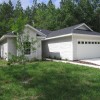 During the post-construction phase, the conservation and planting of native trees in individual yards and open spaces can reduce household and neighborhood carbon footprints. This 5-page fact sheet discusses the importance of urban trees and their role in mitigating for climate change by avoiding carbon emissions and removing carbon dioxide from the atmosphere. Written by Richard Vaughn, Mark Hostetler, and Francisco Escobedo, and published by the UF Department of Wildlife Ecology and Conservation, June 2012.
During the post-construction phase, the conservation and planting of native trees in individual yards and open spaces can reduce household and neighborhood carbon footprints. This 5-page fact sheet discusses the importance of urban trees and their role in mitigating for climate change by avoiding carbon emissions and removing carbon dioxide from the atmosphere. Written by Richard Vaughn, Mark Hostetler, and Francisco Escobedo, and published by the UF Department of Wildlife Ecology and Conservation, June 2012.
http://edis.ifas.ufl.edu/uw366
Agricultural Management Options for Climate Variability and Change: Sensor-Based, Variable-Rate Nitrogen Management (AE487)
 Nitrogen fertilizer cost represents about 10%–15% of total farm costs for corn, cotton, and wheat in the Southeastern United States. The efficiency of nitrogen use can be highly variable for producers, so a sensor-based, variable-rate nitrogen application (SVNA) system has been developed for irrigated and dryland row crops to reduce production costs. Using sensor-based N application, there is a minimum 20% reduction in N usage. If that rate reduction were applied to all the cotton, corn, and wheat grown in the United States, CO2 emissions from N fertilizer production would be decreased by 2.7 million tons.
Nitrogen fertilizer cost represents about 10%–15% of total farm costs for corn, cotton, and wheat in the Southeastern United States. The efficiency of nitrogen use can be highly variable for producers, so a sensor-based, variable-rate nitrogen application (SVNA) system has been developed for irrigated and dryland row crops to reduce production costs. Using sensor-based N application, there is a minimum 20% reduction in N usage. If that rate reduction were applied to all the cotton, corn, and wheat grown in the United States, CO2 emissions from N fertilizer production would be decreased by 2.7 million tons.
This 4-page fact sheet was written by Wesley Porter, Ahmad Khalilian, Daniel Dourte, and Clyde Fraisse, and published by the UF Department of Agricultural and Biological Engineering, July 2012.
http://edis.ifas.ufl.edu/ae487
Agricultural Management Options for Climate Variability and Change: Conservation Tillage (AE486)
 This 4-page fact sheet focuses on the use of conservation tillage in crop production systems as a strategy to minimize the risks associated with climate variability and change and to improve resource-use efficiency. Written by Kip Balkcom, Leah Duzy, Daniel Dourte, and Clyde Fraisse, and published by the UF Department of Agricultural and Biological Engineering, June 2012.
This 4-page fact sheet focuses on the use of conservation tillage in crop production systems as a strategy to minimize the risks associated with climate variability and change and to improve resource-use efficiency. Written by Kip Balkcom, Leah Duzy, Daniel Dourte, and Clyde Fraisse, and published by the UF Department of Agricultural and Biological Engineering, June 2012.
http://edis.ifas.ufl.edu/ae486
Differences between Green Homebuilders and Traditional Homebuilders (FCS3308/FY1285)
 Homebuilders are not a homogeneous group. Throughout the majority of the US homebuilding history, homebuilders may have used similar practices and building materials, but homebuilders who build to a “green” standard differ from those who do not. This 3-page fact sheet was written by Randall A. Cantrell, and published by the UF Department of Family Youth and Community Sciences, March 2012.
Homebuilders are not a homogeneous group. Throughout the majority of the US homebuilding history, homebuilders may have used similar practices and building materials, but homebuilders who build to a “green” standard differ from those who do not. This 3-page fact sheet was written by Randall A. Cantrell, and published by the UF Department of Family Youth and Community Sciences, March 2012.
http://edis.ifas.ufl.edu/fy1285
The Association between One Particular Green Building Program and the Use of Environmentally Certified Wood by US Homebuilders (FCS3307/FY1301)
 A recent survey of US homebuilders shows that there is an emerging trend for smaller- and medium-sized homebuilders to begin using the LEED for Homes green building program in the near future. Half of the homebuilders sampled desire to receive “green-building points,” and one way to do so is by using environmentally certified wood. LEED for Homes appears to have increased US homebuilder awareness of and use of environmentally certified wood. This 3-page fact sheet was written by Randall A. Cantrell, Indroneil Ganguly, Ivan Eastin, and Tait Bowers, and published by the UF Department of Family Youth and Community Sciences, March 2012.
A recent survey of US homebuilders shows that there is an emerging trend for smaller- and medium-sized homebuilders to begin using the LEED for Homes green building program in the near future. Half of the homebuilders sampled desire to receive “green-building points,” and one way to do so is by using environmentally certified wood. LEED for Homes appears to have increased US homebuilder awareness of and use of environmentally certified wood. This 3-page fact sheet was written by Randall A. Cantrell, Indroneil Ganguly, Ivan Eastin, and Tait Bowers, and published by the UF Department of Family Youth and Community Sciences, March 2012.
http://edis.ifas.ufl.edu/fy1301
Intercropping, Crop Diversity and Pest Management (ENY862/IN922)
Growing different crops in the same field and/or planting different crops on the same plot during different times of the year can reduce insect pest populations, increasing beneficial insects, and suppress weeds. In addition, non-crop plants such as weeds, cover crops, and habitat plantings can be combined in space and time to influence numbers of pest and beneficial arthropods on the main crop. This 7-page fact sheet was written by Hugh A. Smith and Oscar E. Liburd, and published by the UF Department of Entomology and Nematology, February 2012.
http://edis.ifas.ufl.edu/in922
Alternatives to Petroleum-Based Containers for the Nursery Industry (ENH1193/EP454)
 Biodegradable containers are an increasingly attractive option for consumers and growers alike. This 5-page fact sheet looks at the past, present, and future of containers used in container nursery production. Written by Gary W. Knox and Matthew Chappell, and published by the UF Department of Environmental Horticulture, November 2011.
Biodegradable containers are an increasingly attractive option for consumers and growers alike. This 5-page fact sheet looks at the past, present, and future of containers used in container nursery production. Written by Gary W. Knox and Matthew Chappell, and published by the UF Department of Environmental Horticulture, November 2011.
http://edis.ifas.ufl.edu/ep454
Bio-based Products from Biomass (AE483)
 Biomass is renewable biological materials, such as trees, plants, grasses, vegetables, algae, food wastes, animal manures, and other organic wastes. Like fossil fuels, biomass can produce a wide selection of bio-based by-products while producing renewable energy. Learn more in this 5-page fact sheet written by Zhaohui Tong, Letian Wang, and Clay B. Olson, and published by the UF Department of Agricultural and Biological Engineering, September 2011.(AP photo/University of Florida/IFAS/Thomas Wright)
Biomass is renewable biological materials, such as trees, plants, grasses, vegetables, algae, food wastes, animal manures, and other organic wastes. Like fossil fuels, biomass can produce a wide selection of bio-based by-products while producing renewable energy. Learn more in this 5-page fact sheet written by Zhaohui Tong, Letian Wang, and Clay B. Olson, and published by the UF Department of Agricultural and Biological Engineering, September 2011.(AP photo/University of Florida/IFAS/Thomas Wright)
http://edis.ifas.ufl.edu/ae483
Energy Efficient Homes: Water Heaters (FCS3277/FY1025)
 Water heaters are the third largest energy expense in your home. This 5-page fact sheet describes factors to consider when purchasing and lists the various choices available. Written by Wendell A. Porter, Hyun-Jeong Lee, Kathleen C. Ruppert, and Randall A. Cantrell, and published by the UF Department of Family Youth and Community Sciences, August 2011.
Water heaters are the third largest energy expense in your home. This 5-page fact sheet describes factors to consider when purchasing and lists the various choices available. Written by Wendell A. Porter, Hyun-Jeong Lee, Kathleen C. Ruppert, and Randall A. Cantrell, and published by the UF Department of Family Youth and Community Sciences, August 2011.
http://edis.ifas.ufl.edu/fy1025
Distillation of Essential Oils (WEC310/UW355)
Essential oils are volatile, aromatic oils obtained from plants and used for fragrance, flavoring, and health and beauty applications. Learn about the history of essential oils, plant anatomy, and basics of essential oil distillation in this 4-page fact sheet was written by Elise V. Pearlstine, and published by the UF Department of Wildlife Ecology and Conservation, April 2011.
http://edis.ifas.ufl.edu/uw355
Predatory Stink Bug, Alcaeorrhynchus grandis (Dallas) (Hemiptera: Pentatomidae) (EENY165/IN322)
Sometimes called the giant strong-nosed stink bug, this very large (20 mm) predatory stink bug occurs in several row crops and preys on other insects, especially lepidopterous larvae. The stages in the life cycle are presented here so that they can be identified in the field. This 3-page fact sheet was written by David B. Richman and Frank W. Mead, and published by the UF Department of Entomology and Nematology, March 2011.
http://edis.ifas.ufl.edu/in322
Conservation Easements: Options for Preserving Current Land Uses (SSFOR21/FR149)
Many landowners have a strong connection to their land and want to ensure its protection for many generations. Conservation easements can prevent future residential and commercial development of one’s land, and reduce inheritance tax liability for one’s heirs. This 6-page fact sheet will describe conservation easements, what is involved in establishing one, some of the tax implications of such agreements, the government and non-government organizations that commonly participate in conservation easements, and important considerations for landowners before entering into such an agreement. Written by Chris Demers and Douglas R. Carter, and published by the UF School of Forest Resources and Conservation, March 2011.
http://edis.ifas.ufl.edu/fr149
Integrating Sustainability into Your Ecotourism Operation (FOR277/FR339)
Despite ecotourism’s promotion of sustainable practices and principles, the potential for negative impacts are great in sensitive, nature-based areas such as protected, conserved, and private lands. This 5-page fact sheet provides insight on sustainability practices that could be integrated into ecotourism operations to minimize negative impacts and ensure long-term protection of vital resources. Written by Tinelle D. Bustam and Taylor Stein, and published by the UF Department of School of Forest Resources and Conservation, December 2010.
http://edis.ifas.ufl.edu/fr339
How to Develop a Marketing Plan for Your Ecotourism Business (FOR278/FR340)
Ecotourism is often seen as a simple business for landowners to begin because little infrastructure is needed; however, certain management skills are needed to effectively operate an ecotourism business. A key business skill is the ability to market one’s ecotourism product or service effectively. This 7-page fact sheet describes the contents of a marketing plan and presents external resources to assist in ecotourism operation marketing. Written by Tinelle D. Bustam and Taylor Stein, and published by the UF Department of School of Forest Resources and Conservation, December 2011.
http://edis.ifas.ufl.edu/fr340
Sustainability of Agriculture in Miami-Dade County: Considering Water Supply (ABE380/AE429)
Developing sustainable agricultural practices in Miami-Dade County (Figure 1) is important to ensuring the future of its economically significant winter vegetable, tropical fruit, and ornamental nursery plant production. This 8-page fact sheet discusses water availability, factors that influence water availability, agricultural water use, and irrigation efficiency as they relate to Miami-Dade County. It was written by Kati W. Migliaccio and published by the UF Department of Agricultural and Biological Engineering, January 2011.
http://edis.ifas.ufl.edu/ae429